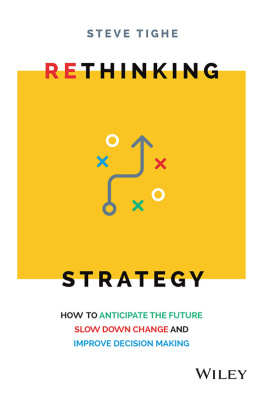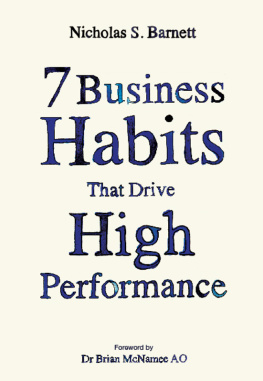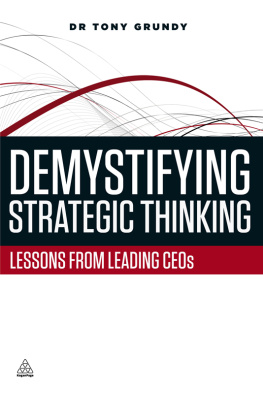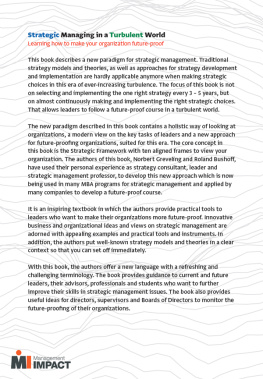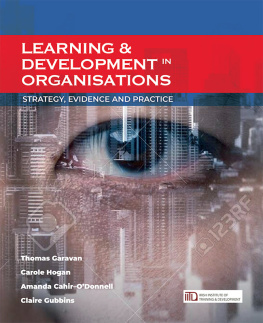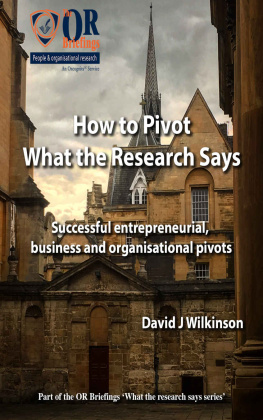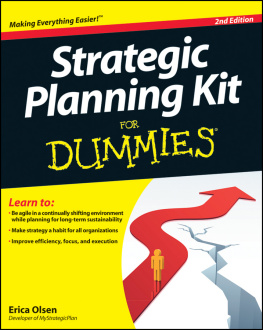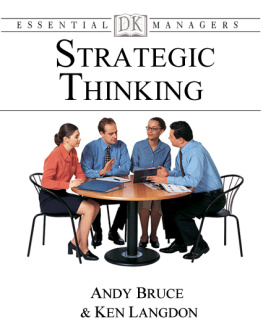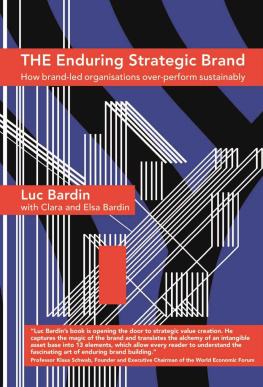
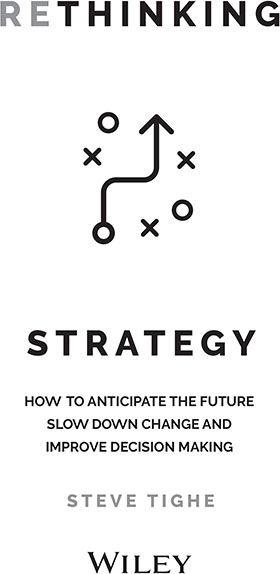
First published in 2019 by John Wiley & Sons Australia, Ltd 42 McDougall St, Milton Qld 4064
Office also in Melbourne
John Wiley & Sons Australia, Ltd 2019
The moral rights of the author have been asserted

All rights reserved. Except as permitted under the Australian Copyright Act 1968 (for example, a fair dealing for the purposes of study, research, criticism or review), no part of this book may be reproduced, stored in a retrieval system, communicated or transmitted in any form or by any means without prior written permission. All inquiries should be made to the publisher at the address above.
Cover design by Wiley
Cover and internal image Pro Symbols / Shutterstock
Disclaimer
The material in this publication is of the nature of general comment only, and does not represent professional advice. It is not intended to provide specific guidance for particular circumstances and it should not be relied on as the basis for any decision to take action or not take action on any matter which it covers. Readers should obtain professional advice where appropriate, before making any such decision. To the maximum extent permitted by law, the author and publisher disclaim all responsibility and liability to any person, arising directly or indirectly from any person taking or not taking action based on the information in this publication.
To Sharon, for believing in me,
and Miliani, for inspiring me
ACKNOWLEDGEMENTS
This book shares my accumulated learning from the past decade and a half of studying and practising strategic foresight, both from within a large multinational company and from working with similar-sized organisations as an external consultant.
My exposure to futures studies began at the Australian Foresight Institute (AFI) at Swinburne University where I was lucky enough to come under the tutelage of Joseph Voros and Peter Hayward. Instantly I appreciated the space they created for thinking about the future and, in the process, opening up a whole new way of seeing the world. This was especially true of their focus on worldviews and values, the hidden drivers of social behaviour and an oft-overlooked component of strategy. I still regard the lifetime work of psychologist Clare Graves, summarised in Spiral Dynamics1 by Don Beck and Chris Cowan, as offering one of the most powerful tools for understanding and anticipating social change.
It was at Swinburne that I met Marcus Barber, whose initial support with implementing organisational foresight assisted me greatly. In my early days as Foresight Manager at Fosters, whenever I found myself asking Where do I start? I turned to Marcus. His practical advice provided a handy counterbalance to the abundance of theories and models that exist within the futures community.
Through the AFI I was introduced to the thinking of Sohail Inayatullah, whose book Questioning the Future2 continues to provide such clarity around how to think about social change and the future. Through the writings of Sohail I learned to appreciate the value of understanding the patterns of history as a guide to the future. His thought-provoking work with Robert Burke enabled me to see the central role that strategic identity plays in allowing organisations to adapt to the future.
The work of another Australian futurist, Richard Bawden, with his emphasis on experiential learning and learning from the future3, strongly influenced my thinking about the purpose of scenarios and the design of scenario workshops. He helped me move on from the certainty of the future, to appreciate its uncertainty, and to bring the future alive in the minds of scenario participants.
Several colleagues from my decade at Fosters deserve special thanks. Bettina Freshney began the journey with me at Swinburne in 2004. We werent sure what we were searching for, but we knew there had to be a better way to think about strategy and innovation. Justin Casey, the pragmatic CEO-in-waiting, continually urged me to pursue the so what? challenge when my focus was too skewed towards exploring whats next? Allan Brassil, a mentor who became a friend, continues to provide invaluable advice today.
Kara Rodden, Andrew Fairlam and Mark Truelson, the innovation A-team at Fosters, quickly recognised the strategic link between foresight and innovation, and fully supported my early attempts at scenario planning. When others were struggling to see the corporate benefits of scenarios, or when self-doubt began to cast its mighty shadow, it was the wisdom and support of this trio that reassured me I was on the right track.
While foresight is critical, hindsight is a wonderful thing. And looking back, its clear that Ive been fortunate to meet so many gifted thinkers and practitioners over the years people who have helped me to constantly review and develop my philosophies and processes on the future, strategy and innovation. So, to the managers, tutors, mentors, friends, colleagues, clients and participants who have helped to shape and shared my experiences along the way, your influence is reflected within these pages.
INTRODUCTION
EMPOWERING YOUR ORGANISATION
Strategic agency is possible in a time of volatility and uncertainty
In December 2003 I pondered a question increasingly at the forefront of every business leaders mind: How do you get ahead of trends? I had been working in the Consumer Insights department at global brewer Fosters (Carlton & United Breweries) for just on 12 months, and from my close vantage point I could see the limitations of our heavy reliance on market trends to guide innovation and marketing. We were a myopic and reactionary company, obsessed with our competitors and often surprised by shifting industry dynamics. We needed to broaden our outlook and to develop our anticipatory capabilities.
From this simple question, my career took a dramatic detour as I commenced my journey into the field of futures studies. While researching the word foresight, I was fortunate enough to discover that Swinburne University in Melbourne had actually established the Australian Foresight Institute. This was a stroke of luck. One of the few places in the world to offer a Master of Strategic Foresight degree was literally just down the road.
Four months later I found myself sitting in class imagining naively that I was about to learn how to predict the future. While this hope was quickly dashed (What do you mean the futures not predictable?), I instantly recognised the organisational value of what I was learning. So much so that in May 2004 I wrote to the Managing Director at Fosters, making the case for a new internal position: that of Foresight Manager. I didnt know exactly what the role looked like, but my instincts told me there was a need for such a function. He agreed and I was it.
So in June 2004, three months after starting my masters degree, and having only just worked out where the best coffee was served on campus, I commenced my role as Foresight Manager at Fosters. Essentially, I was charged with responsibility for understanding how the behaviours of Australians might change over the next 10 years, what future social wants and needs might emerge from these changed behaviours, and what the implications and opportunities might be for Fosters as a beverage company.
Next page
